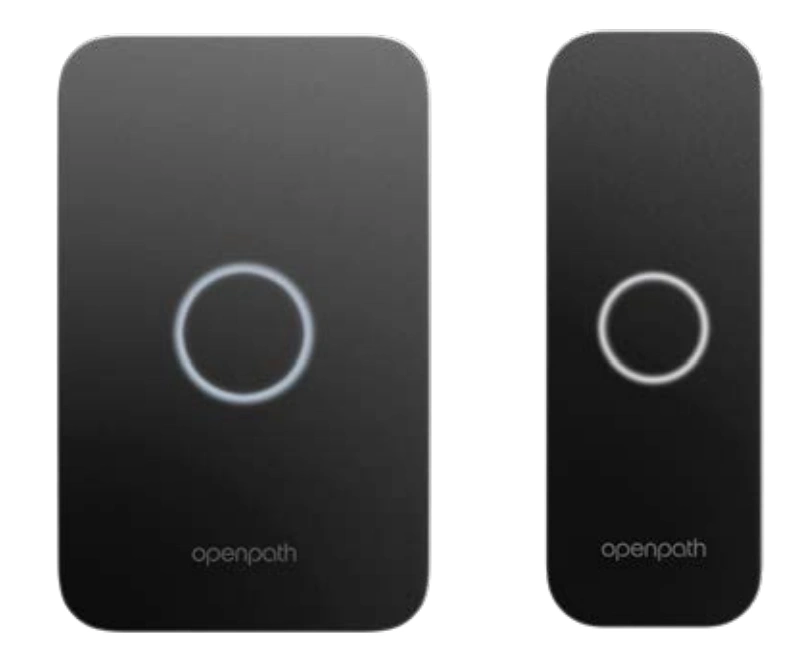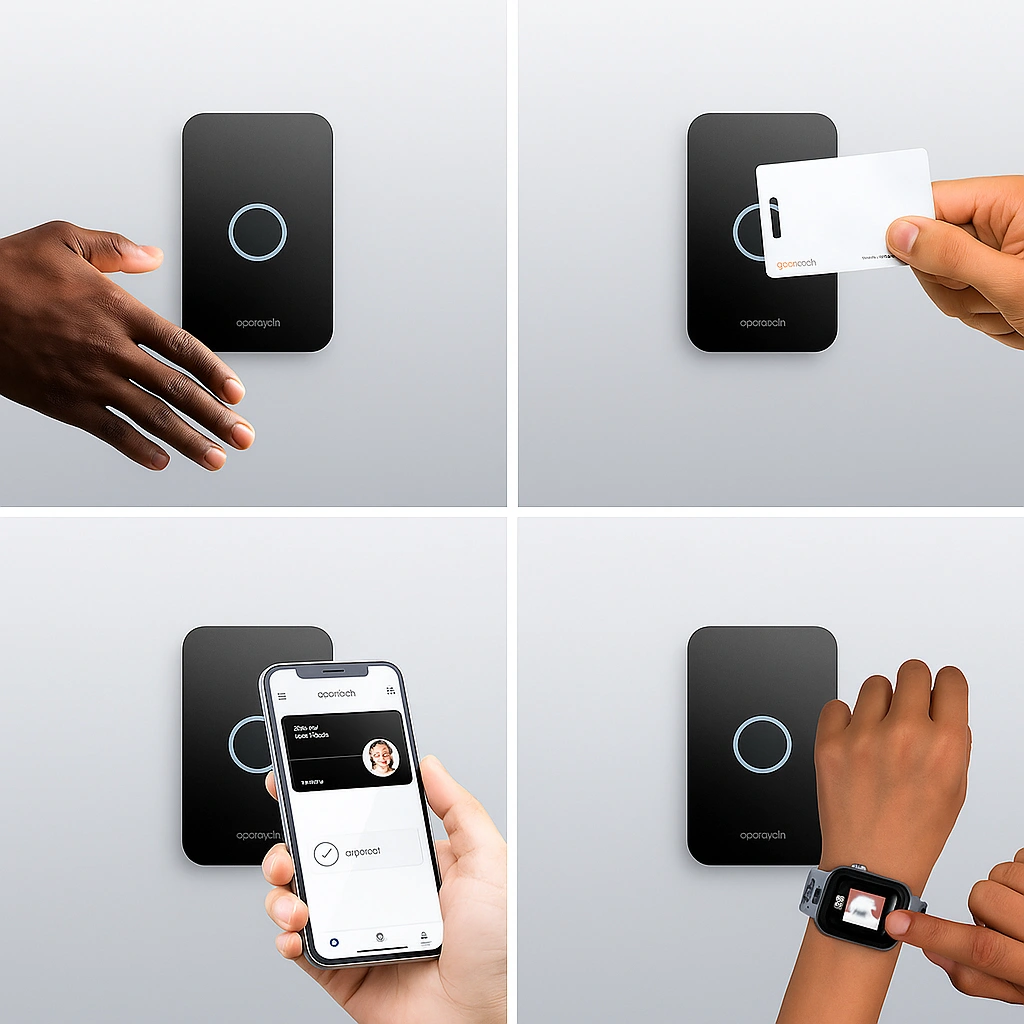If you have already switched to the cloud for your business security, the next step is to implement OpenPath access control.
OpenPath access is a verified keyless entry system that lets you unlock any authorized door with a tap or wave of your smartphone.
Whether it’s a single office or a global network of buildings, OpenPath brings flexibility and control into one intuitive platform.
In this blog, we explain every detail about why your business needs Open Path access control and exactly how it works.
What is OpenPath access control?

Open-path access control is a smart, commercial-grade unlocking system for doors that uses smartphones. It’s a touch-free entry system managed remotely via the cloud by a simple wave of a hand, often without needing to unlock or even touch the smartphone.
You get full control over who enters, when they enter, and how they enter. The employees can use their smartphone credentials anywhere the OpenPath access control system is installed.
Whether it’s an office entrance, interior doors, parking gates, elevators, or even restricted zones within a building, the interesting part is that you can manage permissions, monitor activity, and push real-time updates from anywhere.
How does Open Path access control work?
The simple steps to set up and use Openpath access control:
1. Install hardware:

The first step is to mount the Openpath Smart Readers and connect them to door locks or entry points. Connect Smart Hubs (controllers) and power them in accordance with building requirements.
2. Configure system online:
Access the Openpath Control Center in a web browser. Log in as an administrator to begin setup and configuration.
3. Enroll users:
Add users in the portal by entering their names and contact details. Send mobile credentials via email, allowing users to activate the credentials on their smartphones or smartwatches.
4. Assign access permissions:
Organize users into groups (e.g., employees, visitors). Set access schedules, entry zones, and security roles so each user or group only accesses approved doors or areas.
5. Test and Monitor:

Allow users to unlock doors using their phone app, physical card, or touchless “wave to unlock” feature. Monitor real-time access logs and security alerts.
Why are businesses switching to OpenPath access control?

Businesses, big or small, are already turning to OpenPath access control. Lost cards and rigid access rules not only waste time but also add security gaps.
Key cards were restricted to particular commercial buildings. But Open Path offers digital credentials issued instantly. By simply using smartphones, employees can access corporate headquarters, coworking spaces, data centers, or remote facilities. All through the cloud.
Administrators are also happy because, with a single cloud dashboard, all authorizations can be managed remotely. Every permission can be updated in seconds, and buildings locked down instantly. No on-site maintenance required.
This system is successful in hybrid work and shifting schedules. Businesses also favor the flexibility that it offers:
- Role-based access levels: OpenPath lets administrators assign access rights based on roles. It means each employee, contractor, or visitor has separate authentication for exactly which doors or zones each group can access.
- Time-based permissions: When you need to grant temporary access to hybrid workers who come in on certain schedules or contractors. You can also grant temporary access for specific hours or days.
- Multi-site management: With one platform, companies can manage access across multiple offices or remote facilities, ensuring consistency and security at scale.
- Instant cloud sync: Any changes made to access levels are updated in real time. If an employee leaves the organization or you recruit a new employee, new users get immediate entry, and revoked users lose access instantly.
How to make OpenPath access control even more powerful?

OpenPath Access Control already delivers strong security through mobile credentials, cloud management, and real-time access logs.
But when it’s combined with Remote Video Monitoring, the system evolves from simple access management to a proactive security network.
Here’s how the two work together:
1. Visual verification for every access event:
OpenPath logs who entered, when, and where. But remote video monitoring adds the ‘why’ and ‘how’. Every door entry or attempted breach can be verified in real time through live or recorded video feeds.
2. 24/7 oversight without on-site guards:
If someone forces a door open or tries to tailgate into a restricted area, an alarm is triggered at the live video monitoring station.
Trained monitoring agents can see the incident live and respond immediately by locking doors remotely, reaching out to managers, or dispatching security.
3. Unified cloud management:
Both OpenPath and remote monitoring platforms are cloud-based, which means administrators can control access permissions and view camera feeds from the same environment. Whether managing one building or multiple sites, they get a single, cohesive view of all entry points and security events.
4. Incident response in real-time:
Integrated systems enable instant actions, such as triggering alarms, restricting access, or alerting law enforcement, based on what cameras detect. This turns access control from a reactive tool into a real-time threat prevention system.
5. Data-driven security insights:
Video analytics can detect patterns, such as repeated entry attempts or after-hours access. When correlated with OpenPath logs, these insights help refine security policies, strengthen compliance, and improve operational efficiency across sites.
6. Enhanced safety for remote and multi-site operations:
For businesses with multiple offices, data centers, or remote facilities, pairing OpenPath with remote monitoring provides consistent protection everywhere. Even when no one is physically on site, authorized entries can be verified and suspicious activity investigated instantly.
Frequently asked questions about open path access control:
What is Openpath called now?
Openpath is now called Avigilon Alta, part of Motorola Solutions. The rebrand reflects the integration of Openpath’s cloud-based access control technology into Motorola’s Avigilon security ecosystem, which combines AI-powered video, cloud management, and mobile access for a unified security experience.
What is Openpath access control?
Openpath access control is a cloud-based, mobile-enabled security system that lets people unlock doors using their smartphones instead of keycards or fobs. Designed for businesses of all sizes, it offers touchless entry, remote management, and real-time access monitoring all managed through an intuitive online dashboard. Openpath helps organizations improve convenience, safety, and efficiency while reducing the need for physical credentials.
What are the 4 types of access control?
The four main types of access control systems are:
- Discretionary Access Control (DAC): The owner decides who can access specific areas or information.
- Mandatory Access Control (MAC): Access is regulated by a central authority using strict policies or classifications.
- Role-based access control (RBAC): Permissions are granted based on a user’s job role or function.
- Rule-based access control (RuBAC): Access is determined by system-defined rules, such as time of day or device location.
Is Openpath now Alta?
Yes. Openpath has been rebranded as Avigilon Alta, following its acquisition by Motorola Solutions. The change brings Openpath’s smart access control under the Avigilon umbrella, aligning it with Motorola’s video surveillance and AI-driven security solutions. Avigilon Alta now represents a fully cloud-based, integrated platform for both access control and video security.
Conclusion:
Security should feel simple for you, your team, and your business. With OpenPath access control (now Avigilon Alta), you’re in charge of every door, every credential, and every access point from anywhere. You can unlock doors with just your phone, update permissions in seconds, and see who’s coming and going, all without the hassle of keys or keycards.
If you’ve already moved your business security to the cloud, OpenPath is your next step forward. It gives you the flexibility to manage multiple locations, the confidence of real-time control, and the freedom to focus on what really matters, running your business safely and efficiently.
Contact us today for a customized security solution for your business. The future of access control is already here, and it’s built for you.





